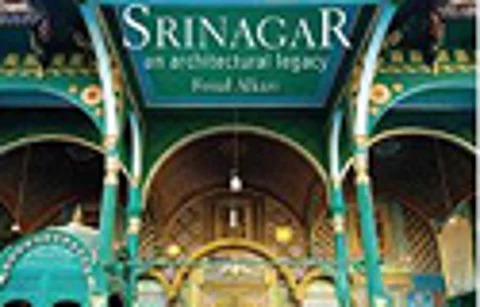

When I was a child, we would drive through Srinagar each summer, along tree-lined boulevards to Gulmarg for golf ,homework, and to play bridge when it rained. After reading Feisal Alkazi&rsquos text on the architectural legacy of Srinagar, one can&rsquot but think of it as a City of Threes
Buddhism, Hinduism and Islam flourished here. The river, the lake and the mountains weave their changing magic and, as he tells us , it &lsquoattracted the priest, the pleasure seeker, and the profiteer&rsquo. Again, its Khanqah shrines have 3-tiered roofs typical of the valley, before they pierce the sky with their steeples. This odd number of three, which takes it away from being symmetrical or remaining on balance as in a weighing scale, is also perhaps the reason why its seemingly calm history has seen so much outsider turbulence. But wars were less endless and the people had to settle down to their lives in order to survive. The last twenty five years have, sadly, put a big red blotch on its tranquil face, which it is now trying to wash away. But the process of assimilation with the rest of &lsquodeveloping&rsquo India is what will make this book an archival record, even before we may know it.
What is nice about this guide is its handy size. The words are disciplined and minimal with just enough information. Fifty pages of compact history. The black and white pictures too do a quiet justice in making it simple and Sufi-sticated Kashmir, land of a great and diverse lineage, gets an author of Alkazi descent, to produce a many-faceted gem with photographic contributions from his father&rsquos collection, also helped by the willing veteran Priti Jain.
History is seldom sans intérêt but when it is told of a city at a geographical and historical crossroad like Srinagar, its layers peel with fascination. To quote from the book itself, the admiration for our ancestors grows. The serious reader will, to quote the book out of context, &lsquobite the finger of admiration with the teeth of wonder&rsquo. The boxes with quotes from other writers also give a taste of the best, as do the appendices for the craft-conscious.
Clearly, there are many ways to see a city positively, optimistically and also contrarily. This book lists that which remains in the positive stream, while it does mention the face of things coming, and yet to come. The cement industry of India has made inroads into the marvellous wooden architecture of Srinagar and much worse is yet to come. The six walks that take one to places where one never goes, require interest and time &mdash something which many modern tourists lack. They just want to &lsquodo&rsquo a place in the fastest time and consider it done Why would one visit a hamam if one has woken up and bathed in a hotel But reading the text leads one to a lot of interesting details. Success was guaranteed to someone who bathed on &lsquoforty consecutive Wednesdays&rsquo. This weekly bath ritual in a cold city was better than the one the French rumour for Queen Victoria &lsquoI bathe once a year even if there isn&rsquot any necessity.&rsquo
The six walks (33) in this book are not for those who are in a rush, but for those who can make Srinagar their base and do the walks that interest them. They are certainly going to end up being unanimous on the city and the book with their &lsquoThree cheers&rsquo
